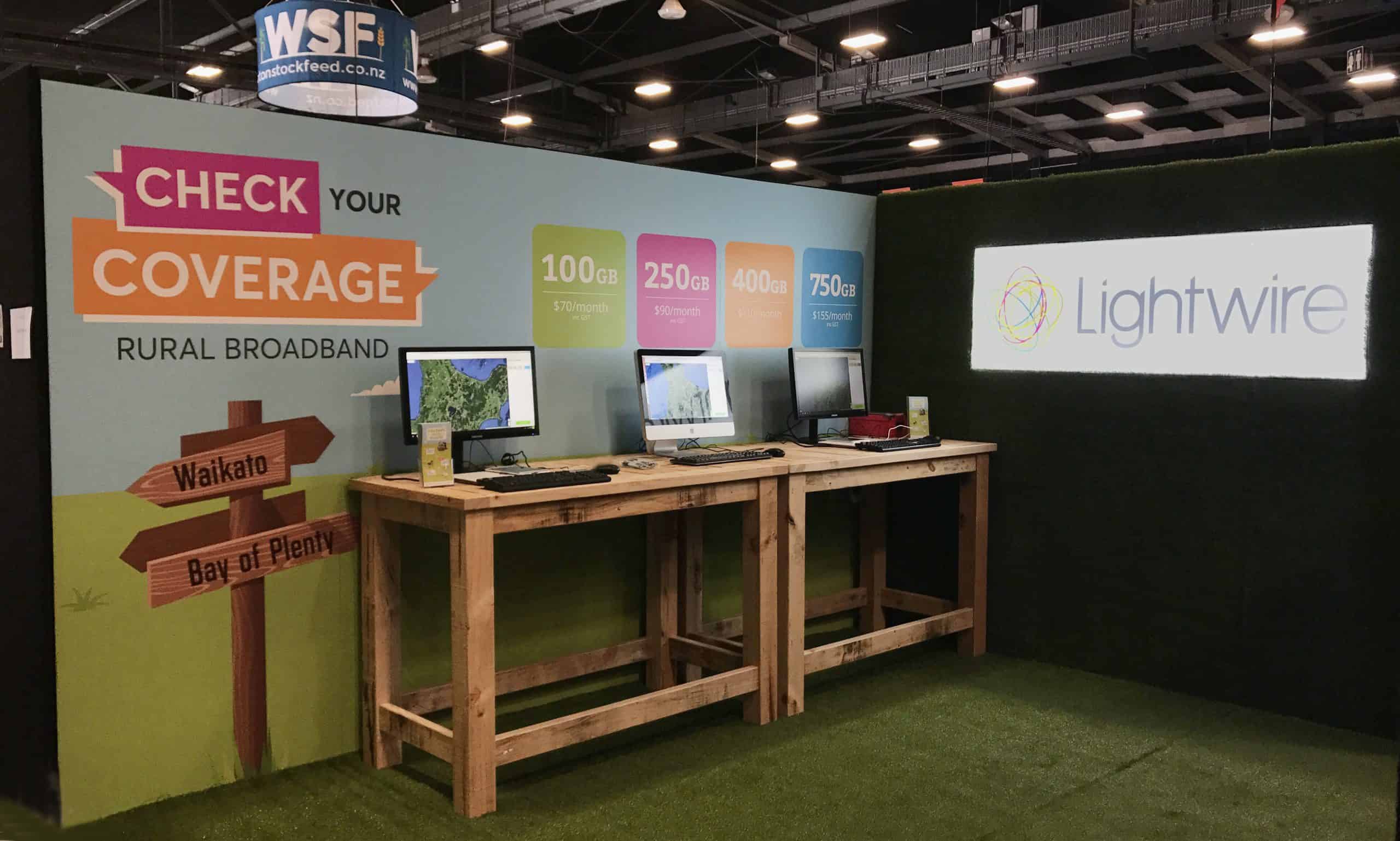At this year’s Fieldays (the Southern hemisphere’s largest agricultural event) we took the opportunity to talk to our customers about their rural internet experience.
We wanted to take the opportunity to ask our customers what it was they felt was the most important element of their residential service.
We initially asked, “How likely is that you would recommend Lightwire to a friend or colleague?”
Answers were as follows:
| Rating | Number of respondents |
| 10 | 55 |
| 9 | 31 |
| 8 | 30 |
| 7 | 11 |
| 6 | 6 |
| 5 | 4 |
| 4 | 1 |
| 3 | |
| 2 | |
| 1 | 3 |
| 0 |
We have at least four customers we have let down badly, but the vast majority are extremely happy with how we perform.
The next question posed was, “when providing feedback on how happy you are with Lightwire’s service, what drives you to give the rating you have today?”
The results came back as:
| Reason | % of respondents |
| Good customer service | 36% |
| Good speed/connection | 30% |
| Good value/price | 16% |
Our Hamilton based team are absolute superstars, but I was surprised to see such value attributed to our help desk team performance. Over the last decade, it has become the norm for telcos to take support operations offshore to lower costs and allow them to drop price points further. Is a locally based help desk now such a novelty that the value of this model is now higher than I realised?
The results in the table above also suggest there is still room for a premium to be applied on the basis of good speeds and great support. Perhaps, speed being equal, the need to match the price points offered by 4G services as they drop further isn’t as acute as I thought given the weaker support offered by Spark and Vodafone.
We also asked people what they wanted to see us improve:
| Area for improvement | % of respondents |
| Faster internet | 42% |
| More reliable connection | 24% |
| Cheaper prices | 6% |
A really interesting response for me was that the need for faster speeds was markedly higher than the desire for lower prices.
This is indicative of a market where speeds are significantly slower than metro areas yet users have the same needs as their city based counterparts.
The NZ (and Australian) telecommunications market has seen a constant squeezing of margins since UFB began to emerge in 2011, and virtually no one is making any money from residential broadband, yet the rural space seems to be bucking this trend. Pricing is much less important than the need for increased speeds. There is an opportunity to charge a fair price for a quality service.
For a detailed comparison between 4G vs Fixed wireless price points, data caps and support, click here
The cost of deployment in rural areas, or more specifically, the cost of high capacity backhaul to remote areas, is significantly higher than in metro areas, so the discussion around higher speeds needs to be paired with the concept of sustainable pricing and contract terms.
Lightwire is working hard to extend our fibre network as close as possible to each of our towers, and where that can’t be done, we are using DMR links. Our aim is to keep price points steady, constantly improve speeds, maintain our excellent level of support, and grow through the referrals of our great customers.
Brendan Ritchie

